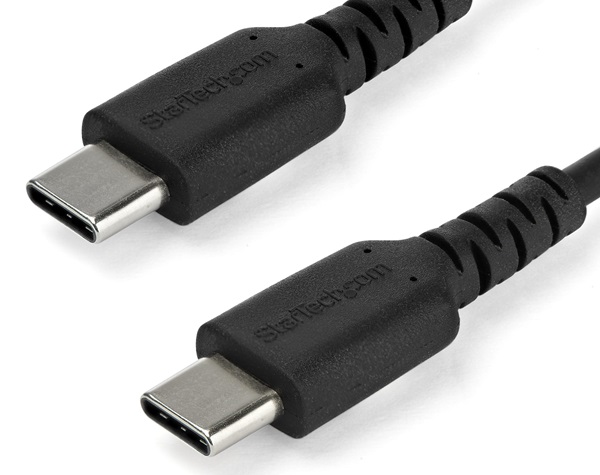 USB-C charging cable;
USB-C charging cable;
From Saturday 28 December 2024, all mobile devices sold in the EU must now be equipped with a USB Type C charging port and comply with USB Power Delivery (PD) specifications. These USB Type C and PD requirements will then extend to laptops from 28 April 2026.
The list of mobile devices includes all new handheld mobile phones, tablets, digital cameras, handheld videogame consoles, headphones, headsets, portable speakers, e-readers, keyboards, mice, portable navigation systems and earbuds, which now have to be equipped with a USB-C charging port.
In June 2022, the European Commission confirmed political agreement reached between the European Parliament and EU Member States on the Commission's proposal on a common charging solution adopted in September 2021.
According to the European Commission back in 2022, "leveraging the power of the Single Market, these new and long-awaited rules will bring resource and CO2 savings while allowing technological innovation".
USB-C will now be the common port. This will allow consumers to charge their devices with the same USB-C charger, regardless of the device brand. At the same time, harmonising fast charging technology will help prevent that different producers unjustifiably limit the charging speed and will help to ensure that charging speed is the same when using any compatible charger for a device.
Also, consumers will be able to purchase a new electronic device without a new charger. This will limit the number of unwanted chargers purchased or left unused.
Background
In 2020, approximately 420 million mobile phones and other portable electronic devices were sold in the EU. However, due to incompatible chargers on the market, more than a third of consumers report having experiencing problems, while spending approximately €2.4 billion annually on additional standalone chargers. At the same time, disposed of and unused chargers contribute to around 11,000 tonnes of e-waste every year.
The European Commission had supported a common charging solution for mobile phones and similar electronic devices since 2009. While years of working with industry on a voluntary approach helped to bring down the number of mobile phone chargers from 30 to 3 within the last decade, this approach did not allow achieve the full harmonisation. With regards to the unbundling of chargers, there was no legal basis to frame such a practice. Since it delivers significant environmental benefits, it is important to complement the harmonisation of the charging receptacle. Additionally, the harmonisation of the charging protocol ensures that both provisions guarantee the full interoperability and retrieve the biggest benefits for consumers and the environment.








